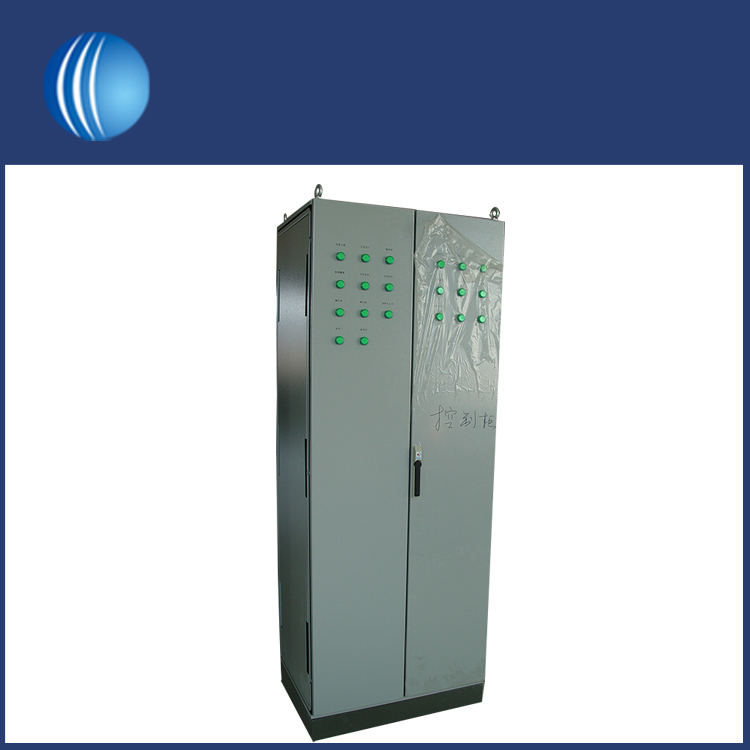Applications of PLC Control Cabinet Enclosure
2024-07-09
A PLC (Programmable Logic Controller) control cabinet enclosure is a specialized housing designed to protect and organize PLCs and associated control components in industrial automation and manufacturing environments. Here’s an overview of PLC control cabinet enclosures, including their features, benefits, applications, and considerations:
Features
1. Material and Construction
- Durable Housing: Typically made from materials such as steel, stainless steel, or aluminum to provide robust protection against environmental factors and mechanical damage.
- Enclosure Ratings: Available in various IP (Ingress Protection) ratings to shield electronics from dust, moisture, and other contaminants.
- Ventilation: Includes ventilation options such as fans or vents to dissipate heat generated by electronic components.
2. Internal Layout and Design
- Mounting Rails: Features mounting rails or panels to securely install PLCs, power supplies, relays, and other control devices.
- Cable Management: Provides cable entry glands, conduits, or routing channels to organize and protect wiring.
- Modular Configurations: Allows customization with removable panels, shelves, or DIN rails for flexible component installation.
Benefits
1. Protection
- Environmental Protection: Shields sensitive electronics from harsh industrial environments, including temperature fluctuations, humidity, dust, and vibrations.
- Impact Resistance: Protects against mechanical impact and accidental damage in busy industrial settings.
2. Safety and Compliance
- Electrical Safety: Ensures compliance with electrical safety standards and regulations by providing proper insulation and grounding.
- Accessibility: Facilitates safe access for maintenance and troubleshooting while preventing unauthorized access with lockable doors or covers.
3. Organization and Efficiency
- Space Optimization: Optimizes floor or wall space by consolidating and organizing control components in a single enclosure.
- Maintenance Efficiency: Simplifies maintenance tasks with clear labeling, easy access to components, and structured wiring layouts.
Applications
1. Industrial Automation
- Manufacturing Plants: Used in factories and production facilities to house PLCs controlling machinery, conveyor systems, and assembly lines.
- Process Control: Applied in industries such as oil and gas, chemical processing, and utilities for monitoring and controlling complex processes.
2. Building Automation
- HVAC Systems: Integrates PLCs for controlling heating, ventilation, and air conditioning systems in commercial buildings.
- Security Systems: Houses PLCs and controllers for building security, access control, and surveillance systems.
3. Infrastructure
- Transportation: Utilized in traffic management systems, railway signaling, and airport automation for efficient control and monitoring.
- Utilities: Deployed in water treatment plants, power generation facilities, and distribution networks for managing infrastructure operations.
Considerations
1. Size and Capacity
- Enclosure Size: Select based on the number and size of PLCs and control devices to be housed, ensuring adequate space for future expansions.
- Heat Dissipation: Consider ventilation and cooling requirements to maintain optimal operating temperatures for electronic components.
2. Environmental Conditions
- IP Rating: Choose an appropriate IP rating based on the environmental conditions where the enclosure will be installed (e.g., indoor, outdoor, hazardous areas).
3. Integration and Compatibility
- Compatibility: Ensure compatibility with PLC models, communication modules, and peripherals to facilitate seamless integration and operation.
Conclusion
A PLC control cabinet enclosure plays a critical role in safeguarding PLCs and associated control equipment, ensuring reliable operation and longevity in industrial automation and infrastructure applications. Its design features for protection, organization, and accessibility contribute to efficient control system management and maintenance in diverse industrial environments.



